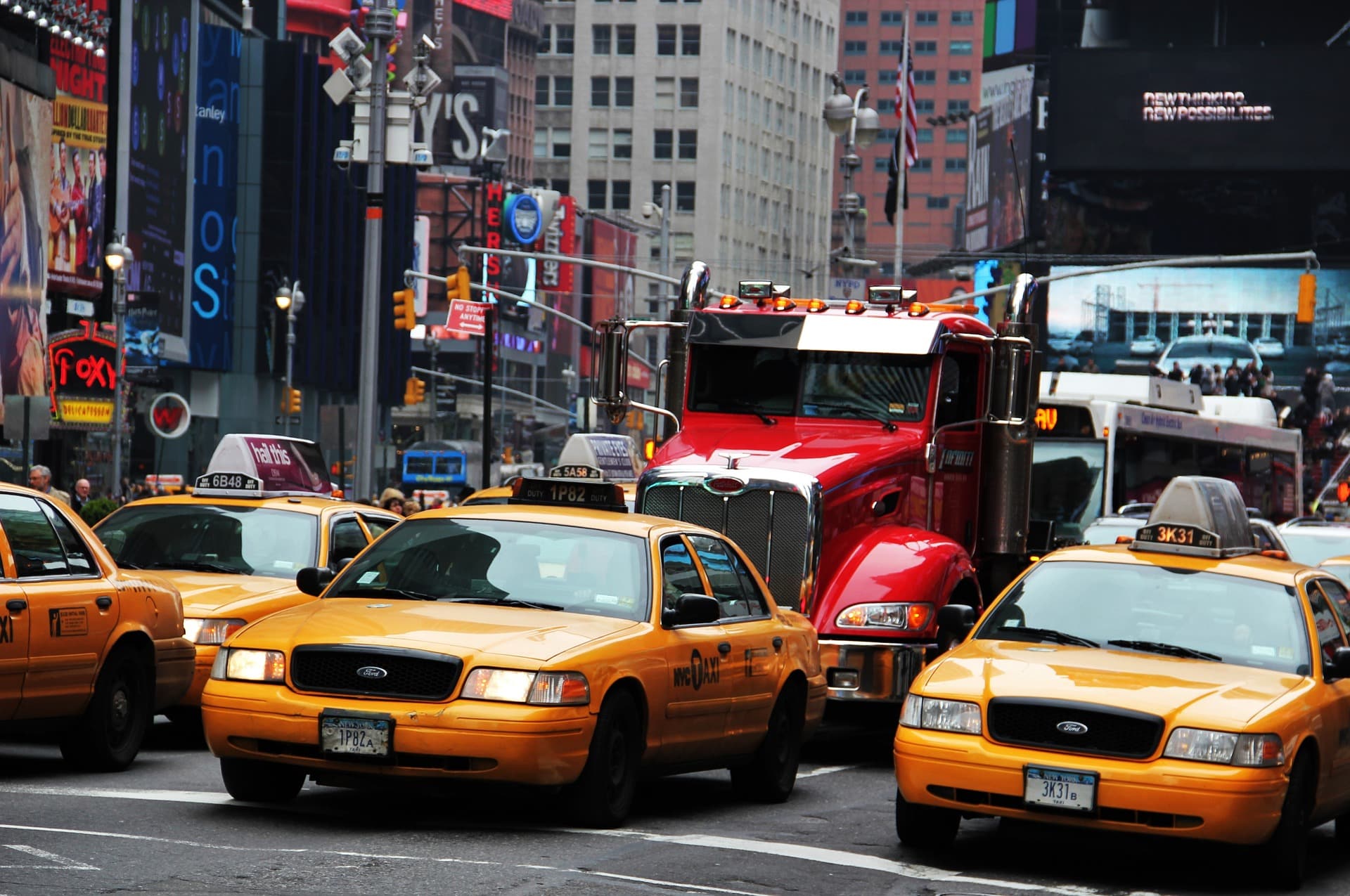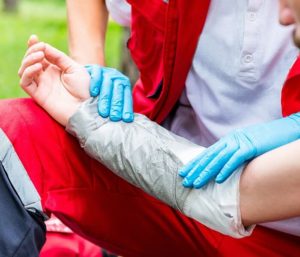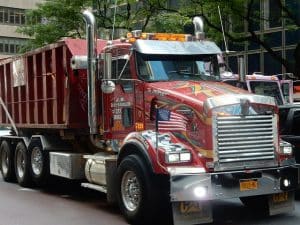Common New York City Truck Accident Injuries & Settlement Amounts

Now that roughly 125,000 trucks pass through Manhattan each day and another 73,000 crosses into Brooklyn’s boundaries, too many bicyclists, pedestrians, motorcyclists, and those riding in other motor vehicles are suffering severe accident injuries and even death. In fact, back in March of 2023, multiple people were seriously injured due to a U-Haul driver hit during an event described by local news outlets as a “rampage.”
Contact our team at (212) 222-1111 for your free case evaluation.
Furthermore, during the morning hours of October 2022, a pedestrian walking in Midtown Manhattan was struck and killed by a tractor-trailer on West 44th Steet near Eighth Avenue. The truck involved in this latter accident had the lettering “Blue Kenseal Construction Products” on its side.
We are fully available to explain your legal rights and begin protecting them
Our experienced Manhattan truck accident law firm often meets clients who have suffered critical injuries due to such events. When we do, we’re fully prepared to readily investigate the accident scenes and defend people’s legal rights after accepting their cases.
The following information reviews the types of injuries clients frequently suffer, along with a look at the factors which influence truck accident settlements. Whether you have collided with a truck or been hit by a commercial vehicle, you’ll need one of our competent attorneys to handle your case while you seek full medical treatment.
Types of injuries commonly seen in truck accidents
- Extensive head and brain injuries that may not always be readily apparent
- Burn injuries, along with severe cuts and lacerations
- Damage to numerous muscles, tendons, blood vessels, and nerves
- Various spinal cord injuries. These can often temporarily or permanently impair the survivor’s mobility and ability to return to work and manage routine life activities.
- Orthopedic damage. Truck accident victims frequently report major neck and back injuries
Clients tell us that they often see these types of events happening within a short distance of where they live or just around the corner. When they occur regularly. in close proximity to area residents, safety advocates begin demanding new safety legislation.
Other common types of harm caused by truck accidents can sometimes leave people with traumatic brain injuries that may require lengthy or even lifelong forms of physical and psychological therapies, along with other types of rehabilitation services.
Contact our team at (212) 222-1111 for your free case evaluation.
Many unique amputation surgeries are available – to help truck accidents, injury patients
Based on categories created by the John Hopkins Medicine website, the following surgeries are divided into upper and lower extremity amputations. All can be referred to as typical injuries sustained in truck accidents.
-
Upper extremity amputations
- Partial hand amputation. As the name implies only the mostly badly damaged portion of the hand is removed.
- A below-the-elbow amputation. The surgeon cuts across the lower arm’s bones (the ulna and the radius) while removing a portion of the lower arm.
- An elbow disarticulation. The lower arm is removed after it has been separated at the elbow from the upper arm.
- An above-the-elbow amputation. The surgery team cuts across the humerus (upper arm bone) so that part of the upper arm, elbow, and lower arm can be amputated or removed.
- A forequarter amputation. Surgeons perform this to remove part of the shoulder and an entire arm. The shoulder bones involved include the scapula and the clavicle.
- Shoulder disarticulation. After a particularly catastrophic New York City truck accident, a survivor’s entire arm can be removed during this operation.
Major injuries resulting from truck accidents often require one or more of the following operations.
- Amputation of part of a foot. There are numerous approaches to this type of operation, depending on the precise damage caused
- An ankle disarticulation. The surgery requires the physician to remove the foot after it’s been separated from the lower leg by cutting at the ankle.
- Removing part of the lower leg and foot in a “below-the-knee” amputation.
- A knee disarticulation. The lower leg is removed after it’s been separated from the knee from the upper leg. This operation involves cutting through the fibula and tibia.
- Removal of part of the lower leg and the knee. While performing this amputation, the surgeon must cut across the femur or upper bone of the leg.
- A hip disarticulation. This operation following a catastrophic truck accident injury involves amputating the entire leg after separating it from the hip joint and the pelvis.
- A hemipelvectomy or pelvic amputation. Patients undergoing this surgery will lose part of their pelvis and an entire leg.
A double amputation simply refers to removing both legs, arms, feet, or hands. There are three basic approaches to surgical amputations, determined by how best to preserve the patient’s mobility, appearance, and physical sensations.
- A standard amputation. During this type of surgery, the doctors and nurses concentrate on removing the limb and surrounding anchor muscles in a manner most likely to make it possible for the person to wear a prosthetic or artificial limb. They must keep enough padding or soft tissue at the end of the remaining limb to minimize pain while the patient bears weight on it – hopefully, without causing tissue breakdown or infections.
- This type of surgery is often chosen for patients battling a tumor in either a bone or soft tissue. While performing this procedure, the surgeons remove the limb part containing cancer. Then, the doctors turn around and re-attach any healthy tissue left below the tumor. Further stages of this type of surgery can make it easier for the later use of prosthetic limbs during sports and other activities.
All the surgeries described in the paragraphs above are the ones often chosen for the major injuries resulting from truck accidents.
Compensation for truck accidents
Although there are average truck accident settlements, it’s often best to wait and ask your New York City commercial truck accident attorney for an estimate of what your case might be worth until after your major medical treatments have been completed. Stated differently, once copies of all your medical records have been obtained and reviewed, we’ll have a better understanding of what your case may be worth during settlement negotiations.
Many factors can affect what you may receive during settlement negotiations – or once a verdict is rendered if your case had to go to trial. Here are some of the main ones.
- Liability. Does all the evidence we’ve been able to obtain strong support your testimony, and that of others, as to how the truck accident occurred? After investigating the scene of the accident, we will also request a copy of any police accident report. If we can easily establish that the truck driver was solely liable for causing all your injuries, your case value can reach the higher end of the recovery spectrum. However, if a strong argument can be made that you were at least partially at fault for the accident, the value of your case under New York’s comparative law statutes – can greatly reduce or even prevent financial recovery.
Contact our team at (212) 222-1111 for your free case evaluation.
Given the presence of many video cameras near major traffic scenes, chances are we can find clear evidence that will support your claim. Always be sure to tell us if you know of anything you may have done that could have contributed to causing the truck accident. We can only prepare your strongest case if provided with all the correct facts.
- The total cost of all your medical care and treatment. If you had to undergo multiple surgeries and other treatments, your case value will likely grow larger. Likewise, if your treating physicians are saying you will need extensive future medical care and treatment due solely to your new truck accident injuries, then we must calculate what your care and treatment may cost over the cost of your lifetime. Settlement values and court verdicts often grow much larger when plaintiffs have sustained life-altering, catastrophic injuries.
- Your lost wages – and possible lifelong inability to work again. Those who are a bit younger and were earning high amounts at the time of their serious or catastrophic truck accidents will naturally have a chance of receiving a higher settlement, based on our calculation of lost earning capacity. Yet if you were only holding down a part-time job or low-paying position, you may receive a somewhat more modest sum.
- Property damage. This is mainly linked to the amount you are awarded if you were driving a car or other vehicle that was totaled in the accident.
- Your pain and suffering. Although insurance companies and defense attorneys try to keep these parts of any award quite small, they can be rather significant, especially if you saw a family member lose their life during the accident – or personally suffered major bodily amputations, severe head injuries, or other unique losses.
While some truck accident survivors might only receive settlement offers near $15,000 to $30,000 in cases involving minor surgeries and only minor lost wages, others can be awarded sums between $300,000 to over one million dollars. Nearly everything will depend on the extent of your medical treatment costs, whether you’ll be able to work again, whether you can be found at least partially liable for causing the collision, and if your physical injuries will require lifelong home care and possible future surgeries.
Contact our team at (212) 222-1111 for your free case evaluation.






